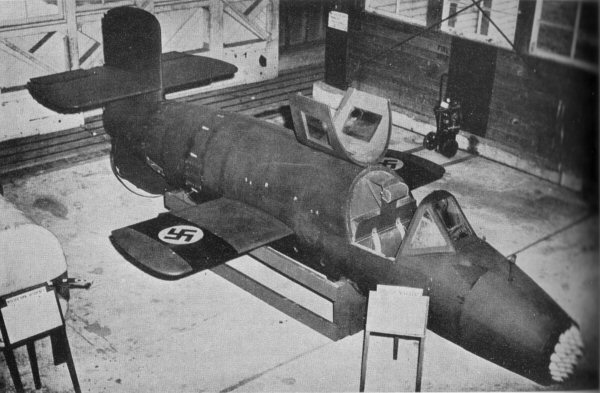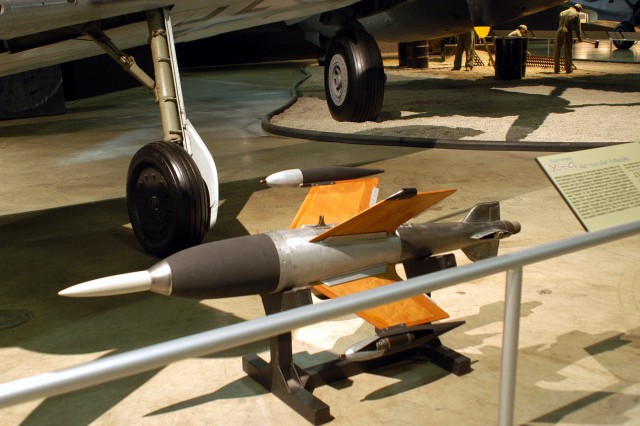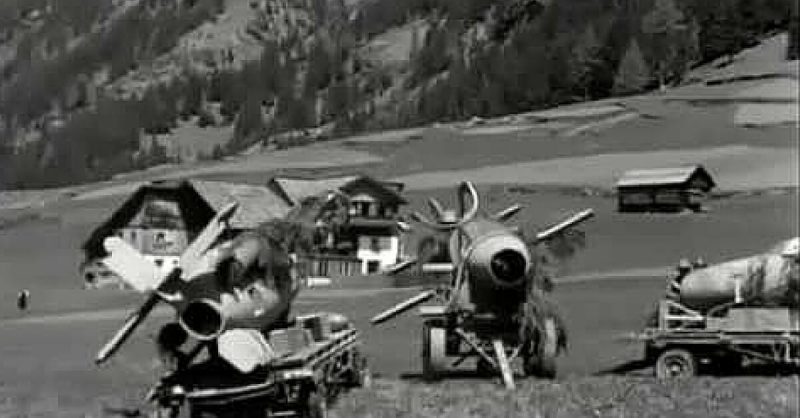In the Bavarian alps, in the final stages of the war in Europe, the allies discover the remains of some of Germany’s secret weapon program.
Bachem Ba 349 “Natter”

This point-defence German interceptor was powered by rocket and was first used on 1st March 1945. The air superiority of Luftwaffe over Axis occupied land were challenged by the Allies in 1943. To counter the Allied strategic bombing, surface to air missile (SAM) type weapons became more effective.
It required no runway as it took off from a vertical 25 ft rail fixed with a small tower. Most of the work in this interceptor aircraft was done by autopilot. A relatively inexperienced pilot inside it had the one major task of aiming the Interceptor at its target plane and firing rockets.
After firing off all the rockets and upon running out of fuel, the Ba 329 would glide down to 10,000ft. The nose would be jettisoned off, then the pilot and the fuselage containing the motor of the rockets would land using two different parachutes.
The first manned test flight was a disaster, at 1,500 m, 3G acceleration made the test pilot pull the aircraft controller wrongly causing a nose dive crash. 36 of Bachem Ba 349 were built by the end of the WWII but were never deployed in active combat.
Ruhrstahl Ru 344 X-4

At the end of the Second World War the Germans built a wire guided air-to-air missile, the Ruhrstahl Ru 344 X-4. It never was used in combat, being developed too late for it to be ready, it remains unclear if it would have worked.
The X-4 was the starting point for the development of ground-launched anti-tank missiles that became the basis for post-war development all over the world.
https://www.youtube.com/watch?v=dPi9rS50hTg
